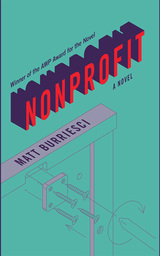Cloth: 978-0-674-11612-2
Although the number of people under twenty years of age in the United States rose from 17 million in 1860 to 47.6 million in 1930, the percentage of them in the total population declined sharply during the same seventy years from 51 percent to 38 percent. This declining proportion of children and young people to adults did not lessen concern for their welfare. On the contrary, as they became relatively less numerous, the young became in a way more visible, and their needs were more easily recognized.
This second of three volumes that trace the history of the nation's changing provisions for its youth covers the period from the end of the Civil War to the beginning of the New Deal. These were years rich in innovations which, although not fully realized, represented substantial advances in the welfare, education, and health of children. Much of the philanthropic energy of the late nineteenth and early twentieth centuries went into the provision of special facilities for children, who had formerly been treated in the same way as adults. State, and in some eases, federal legislation attempted to safeguard children against premature, excessive, and dangerous labor; sought to protect them against abuse. neglect, immorality, disease, and unsanitary surroundings: and compelled them to spend more time in school. The first White House Conference on the Care of Dependent and Neglected Children was convened by Theodore Roosevelt in 1909, and in 1912 the United States Children's Bureau was established. This single most important development in public provision for children during the early twentieth century signified the acceptance by the federal government of responsibility for promoting the health and welfare of the young.
In this two--book volume, major topics like the legal status of children, child health, and education have been broken down into specific areas so that the items of specialized concern are easily accessible. Some of the nearly 100 topics covered include birth control and abortion, the mothers' aid movement, theories and studies of juvenile delinquency, the progressive attack on child labor, and the child labor amendment. The Children's Bureau, the development of pediatric thought, the fight against infant mortality, child health and the Depression, the origin and development of the public high school, and the education of children of minority groups are also treated.
The text includes both published and unpublished, private and public documents. It is augmented with selected contemporary illustrations.
See other books on: Barnard, V. John | Bremner, Robert H. | Hareven, Tamara K. | Mennel, Robert M. | Youth
See other titles from Harvard University Press












